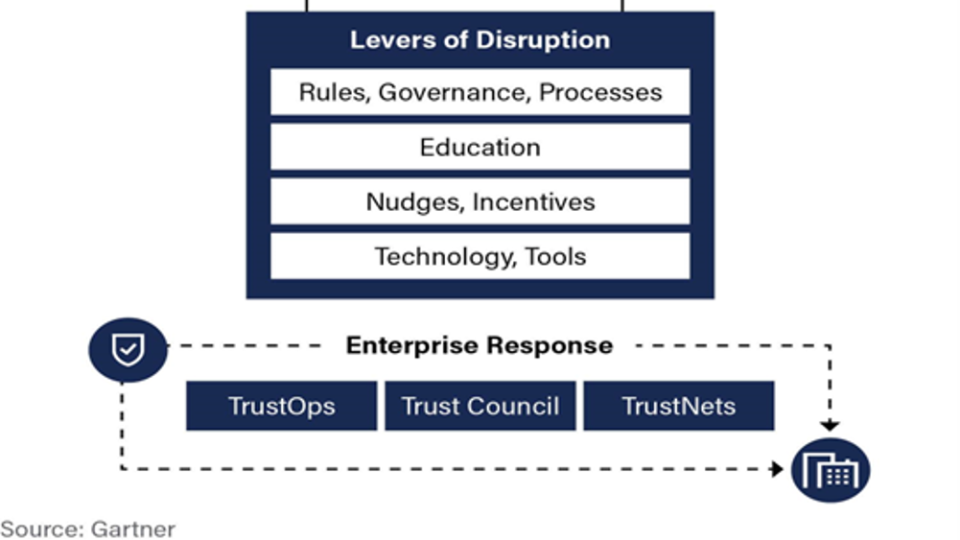
By Andrew Carr, Managing Director, Camwood
This collaborative network provides specialised expertise and resources, enabling the seamless integration of tailored and advanced technologies for managing effective data strategies amidst a dispersed workforce.
The new work era
Organisations are still grappling with the optimal operating model, but the matter of fact is that the way we work has changed forever. While some larger corporations have mandated a full-time return to the office, others have adopted a hybrid working model, embraced fully remote working, and even shortened the workweek to four days after conducting successful trials, without loss of pay for employees.
Flexibility in working models has certainly become a critical factor in attracting and retaining talent. When thinking about a new role, 71% of employees consider having a flexible working pattern as important and 69% want the ability to work from anywhere. Each approach to the working model brings its own set of challenges and benefits for organisations, particularly when it comes to data management, access, and security. For channel partners, understanding and addressing these challenges is crucial to supporting their clients effectively.
Increased risk of security breaches
Remote and hybrid working environments inherently increase the risk of security breaches. One primary reason is the use of personal devices and unsecured networks, which can expose sensitive data to potential threats. For example, employees accessing corporate systems from public Wi-Fi networks face higher risks of interception and unauthorised access.
There’s also a matter of document proliferation as remote workers often email files back and forth, each with their own naming conventions. This document chaos complicates data management and poses a security risk is duplicate, sensitive information is inadvertently stored in multiple locations.
During the pandemic, there was a notable increase in phishing attacks targeting remote workers. In fact, a report by Zscaler highlighted a 30,000% increase in phishing, malware, and malicious websites targeting remote users. Another study by Barracuda Networks noted a 667% increase in phishing attacks in just one month during the early stages of the pandemic as cybercriminals wanted to exploit vulnerabilities associated with remote works, sending emails that appeared to be from legitimate sources but contained malicious links or attachments. With more employees continuing to work from home or public places, the risk of cyberattacks and loss of sensitive information remains.
Strategies for effective data management
Managing data access, security, and version control for remote workers requires comprehensive strategies and best practices. Channel partners can provide essential support in this area through centralised policies for storage and backup, and by eliminating duplicated data across networks. For example, a file shared via email and saved by multiple recipients in different locations needs centralised management to avoid version control issues. Most medium to large organisations have centralised policies, but the problem often stems from a lack of enforcement. Additionally, re-educating employees beyond initial onboarding on how to securely store, access and share data often takes a backseat.
One critical aspect is the misconception that using cloud services automatically ensures data security. Businesses must implement proper governance and management practices to protect data stored in the cloud. This includes continuous education of employees on cloud security best practices, as well as regular audits and updates to security protocols.
Moreover, as businesses adopt AI and machine learning technologies, new challenges in data security emerge. Employees need to be trained on how to protect sensitive information within AI systems, ensuring that data used in these systems is secure and that AI outputs do not inadvertently expose confidential or proprietary information.
The channel's role extends to providing managed storage services, ensuring proper governance and controls are in place. The channel acts as a conduit for large global vendors, bringing best-of-breed technology to market and wrapping it in service capabilities that include consulting on best practices for data governance, storage, management and retention. This collaboration enhances the security and management of data for organisations.
Enhancing security through ‘coopetition’
The concept of "coopetition" — collaboration and competition within the channel ecosystem — highlights the importance of working together to strengthen security and data management capabilities. Channel partners often encounter the same customers but in different capacities, making cooperation essential for delivering comprehensive solutions.
Examples abound of how channel partners enhance security and data management for organisations, from implementing zero-day threat protections to managing complex, dispersed IT environments. The channel's ability to adapt and provide tailored solutions ensures that businesses can operate securely and efficiently, regardless of their working model.
Controlling data chaos
As organisations continue to navigate a changing business landscape, the role of channel partners in managing effective data strategies for dispersed workforces becomes increasingly critical. By leveraging their expertise, resources, and collaborative approach, channel partners help control data chaos, enabling organisations to maintain robust data security and management practices. The value brought by the channel partner ecosystem facilitates the adoption of advanced technologies and provides the necessary support to ensure these technologies are effectively integrated and managed within the unique contexts of each company. That way, businesses and individual employees can remain productive and resilient, wherever and whenever they choose to work from.




